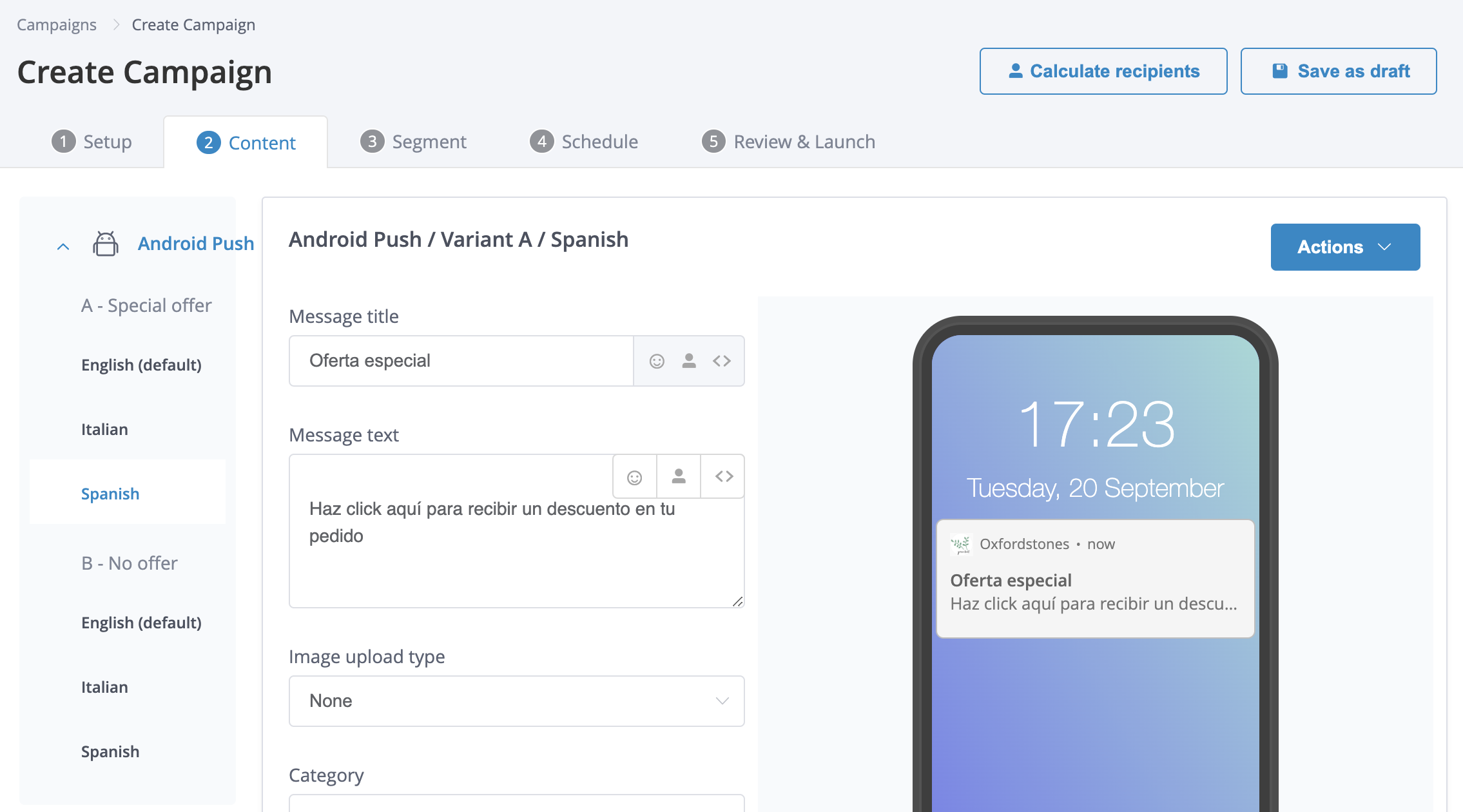Android content
Design push notifications that will be sent to Android devices
The Android tab allows you to design push notifications that will be sent to Android users.
Build your Android push
Using content elements
You can add emojis and dynamic content to your Android push, for both the title and the body of the message.
Click the smiley icon to display a list of emojis and click the one you want to add to your message.
Click on the user icon to add data from your user attribute fields. Type the name of the field you want to use, or select it from the presented pick list.
Click on the code icon to add content snippets. Type the name of the field you want to use, or select it from the presented pick list.
Image upload
As well as the title (which will default to the app name) and the body of the message, the push notifications can also include an image. Review our best practices for push notifications.
Category
You can select what push category your message falls under. Start typing the category name that you want to assign, a pick list of matching names is provided, and select the one required.
Each category allows you to set up a default action and a list of buttons for your message. Push categories must be created beforehand. Read this guide for more information about push categories.
Default action
Select the default action that will occur when the user clicks on the notification; the options available are:
- None (selected by default): opens app
- Open URL: to open it either inside or outside the app. Enter the URL you wish to use in the accompanying input field.
- Go to deeplink: to open a certain part of the app. Enter the app deeplink you wish to use in the accompanying input field. See our deeplinks guide for more details.
- In-app message: when added, it creates an in-app tab within the campaign. When users click on the notification, an in-app message gets triggered.
Payload
A key/value payload can be added to the notification delivered to the user. Customers may have custom payloads available as part of their integration. Payloads are not initially visible to the user but if the push is opened the app can access some payload values from the push message and perform some custom behaviour with them.
Preview the message
The right-hand pane will show a preview of what your message will look like on an iOS device. If you are using dynamic data, you will need to send a test message to see the data included.
Multi-language and variants
It is possible to create a multi-language campaign with new titles and messages based on the languages selected at the campaign level. It is also possible to do a split test to see which variant has a better engagement. Both options are enabled and configured from the Setup tab.
The languages you have selected, together with the variants selected are shown on the left side of the campaign. To be able to identify with which variant and language you are working, this information is shown on the top of the screen.

This example shows a multi-language campaign for English, Spanish and Italian speakers, combined with split testing. Currently the content shown is for the Spanish version of variant A.
Actions
The Actions button allows to Apply a template that has been previously created from Content > Templates to a campaign and to copy the content from a specific language & variant. To copy the content, click on Copy From when you are on the variant and language where you want to apply the content. The system will show the available options to copy from.
Updated 4 days ago